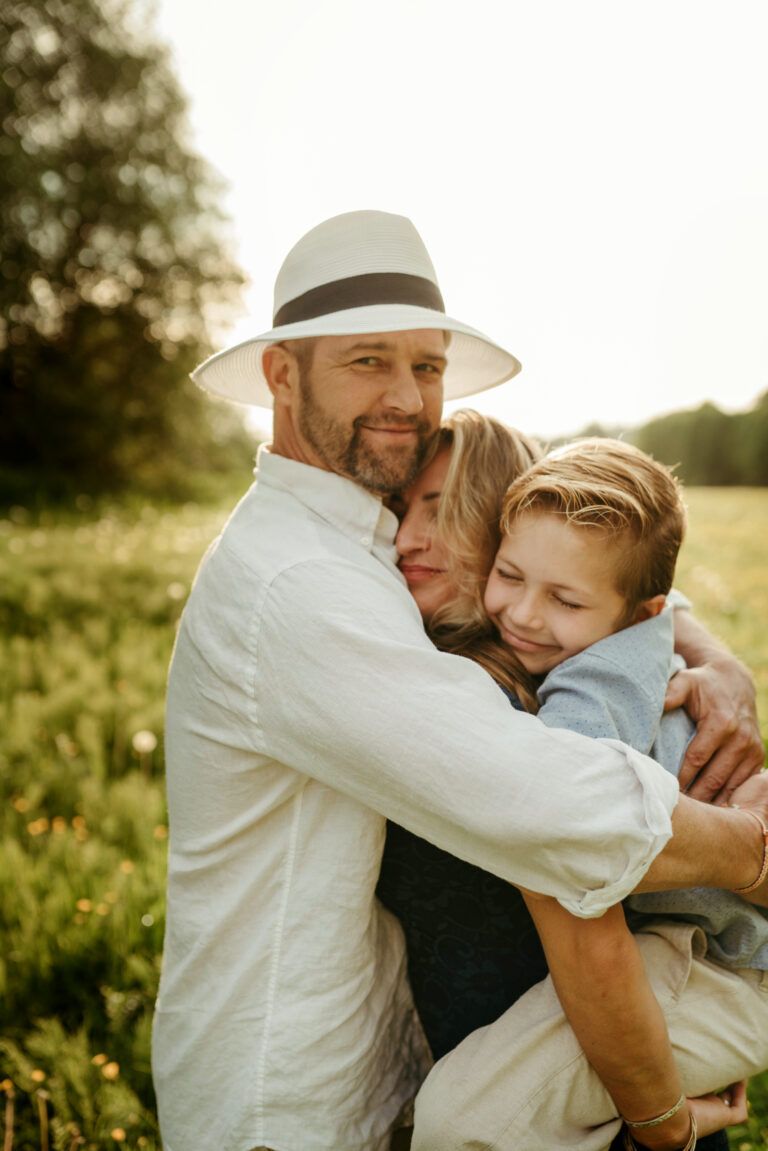By: Tia Mazzone, Caregiver
Brad’s journey is an extraordinary one. In October 2022 he started having headaches mid-month. Due to the weather being smokey and dry conditions, his wife, Tia suggested he go to the doctor for what could potentially be a sinus infection. He was treated with five days of steroids and two weeks of antibiotics. Initially, due to the steroids, Brad felt much better.
But nearing the end of the two weeks, his headaches had returned accompanied with confusion. He went to go back into urgent care, leaving work to do so. He called Tia after parking his truck explaining he couldn’t find his truck and couldn’t find a doctor’s office. She drove to find him disoriented and confused, searching for his truck for hours. Once he got to see the doctor again, they took him down to the ER for imaging, where they first said it was simply migraines, but after Tia insisted they do further testing, a CT scan found a mass.
Twenty-four hours later he was getting a biopsy. It came back as GBM, and the MRI showed the tumor was the size of a peach, and in an inoperable spot on top of his corpus callosum. An earth-shattering diagnosis. On Thanksgiving Day he had his first seizure, and five days later he had his initial visit with the Neuro-Oncologist (NO). Almost one month after diagnosis, he was finally seen. His NO upped him to 24mg of dexamethasone and was then scheduled to start standard of care (SOC), which was six weeks of radiation and temozolomide in mid-December.
Shortly after being upped to that level of dexamethasone, he got a steroid rash, but the NO wasn’t too concerned. Then, due to the stress on his immune system, he got a rash covering both of his legs. He got some steroid cream prescribed and we hoped it would subside. He didn’t make it to his first radiation appointment, or his second. He was too tired, and was in too much pain to get out of bed. With help from family, Tia took him to the ER knowing something was wrong, where they were told even with treatment, the swelling in his brain was too great and he may have a month left to live.
Although Brad couldn’t fully comprehend what was said, he still wanted to live. Tia pushed for something she had read about that can help drain edema, called Avastin, and the NO agreed to put the order in. The next day, Brad’s pain was unmanageable and Tia was told to call hospice. Hospice showed up the following day, and they did their best to get his pain under control, gradually upping him to 80mg of Oxycodone a day just to control it. He was unsteady on his feet and could be grumpy and defiant, and had two more seizures while on hospice.
Then, just as Tia was told to pick out a funeral home, and the fear of him not making it to Christmas came to the forefront of reality, the call came that he could get scheduled for an Avastin infusion.
Within a few days, again with help, Brad was wheeled into the infusion center. He slept through all of it. It was a final Hail Mary to do anything…try something. Four days later, on Christmas morning, he got out of bed, got dressed, was mostly coherent, and opened presents. It was shocking and the best Christmas present any of us could have asked for. Avastin worked for him, in a big way. Later that day he had another seizure, which he was able to sleep off.
Tia had felt there was a lack of urgency with Brad’s care, so they went to get a second opinion, at which point they switched NO’s in January. The new NO pushed to expedite his SOC, getting him scheduled within two and a half weeks after switching care. Yet again, he didn’t make it to radiation. Over those two and a half weeks, his rash got much worse and he was in a lot of pain. He talked a lot about pressure behind his eyes. His mood started to become more volatile. His hearing was impaired. His headaches were bad. He started doing things that he normally wouldn’t, such as being excessively concerned about little things and taking walks and stopping to sit in a neighbor’s yard. He was still strong, and wanted to do one of his favorite things, so with friends for support, he went skiing with Tia and their son. They all needed to feel a little normal again, and while Brad did take it easy, he didn’t skip a beat on the slopes.
Some days were good, others wild and unpredictable. It was decided by Tia and the NO Avastin needed to happen every 2 weeks, hoping that the majority of the changes were due to edema, while also knowing it could be a tumor tentacle or something else. He started radiation at the end of January. He handled treatment well in the beginning with not really any side effects to speak of. A week and a half into treatment, things turned yet again. He wasn’t sleeping much and seemed to almost have manic episodes. He was having trouble using his phone in any capacity. His rash was causing him unbearable pain. It had only worsened since its onset, and he was only finally able to get into a dermatologist at the beginning of February. He had shingles, a severe case due to it covering both of his legs. He was put on two types of antibiotics for it. Tia was constantly writing notes to his NO and team, as well as calling them. She was told by the NO only to do both if it was “a real emergent situation.” His moods started to become more and more unstable, ranging from anger, fear, to paranoia. He mentioned not feeling well and after a test, he was Covid-19 positive. It seemed that so much was happening with him, and Tia was starting to become increasingly concerned. Within 24 hours Brad was taken by ambulance in restraints to the ER. He had become completely delusional, was combative, and confused.
Once admitted and after much testing he was admitted to an oncology unit. The admitting doctors suspected he could have meningitis. His body was in absolute duress. Once he was given some things to calm his mood and started IV treatment for his numerous infections, he was hooked up to an EEG monitor. During the next few days, he was mostly incoherent. His paranoia remained, he was impossible to reason with, and at times didn’t even recognize his wife. He spoke of colors and shapes and space, all of which after some time spent with him Tia could see correlated with something, like yellow for pee or sun for his own son.
After days being monitored, it was found he was having a massive amount of focal seizures. Over a 12-hour period he had up to 24, some lasting 30 seconds, while others could last for 20 minutes. He was given a few different IV seizure drugs, and slowly his behavior calmed and the seizures were at bay. Brad and Tia could never get a definitive answer on why his behavior changed so drastically. There were too many variables to pinpoint one thing—even the seizures couldn’t fully be blamed. He spent 12 days in inpatient. Brad doesn’t have a clear recollection of all that happened just before and during his impatient stay, but he does know bits and pieces.
The NO wanted Brad to be admitted to inpatient hospice after his stay due to how severely his mood changed, but Tia said no. She knew Brad would want to be home, and knew he still, after all this, wasn’t done fighting. And with great resolve Tia was determined to support him coming home with her and continuing his care plan. After a few days home to be sure everything stayed stable, he finished off his SOC with yet again very little side effects beyond being a little extra tired.
He is now almost done with his adjuvant chemo and is 10 months since diagnosis. His goal is to remain as optimistic as possible. His journey isn’t over because his wife fought for his care, and because Brad fought to be here. We hope this story can inspire the fight in you too, a patient, caregiver, family, and friend alike.





